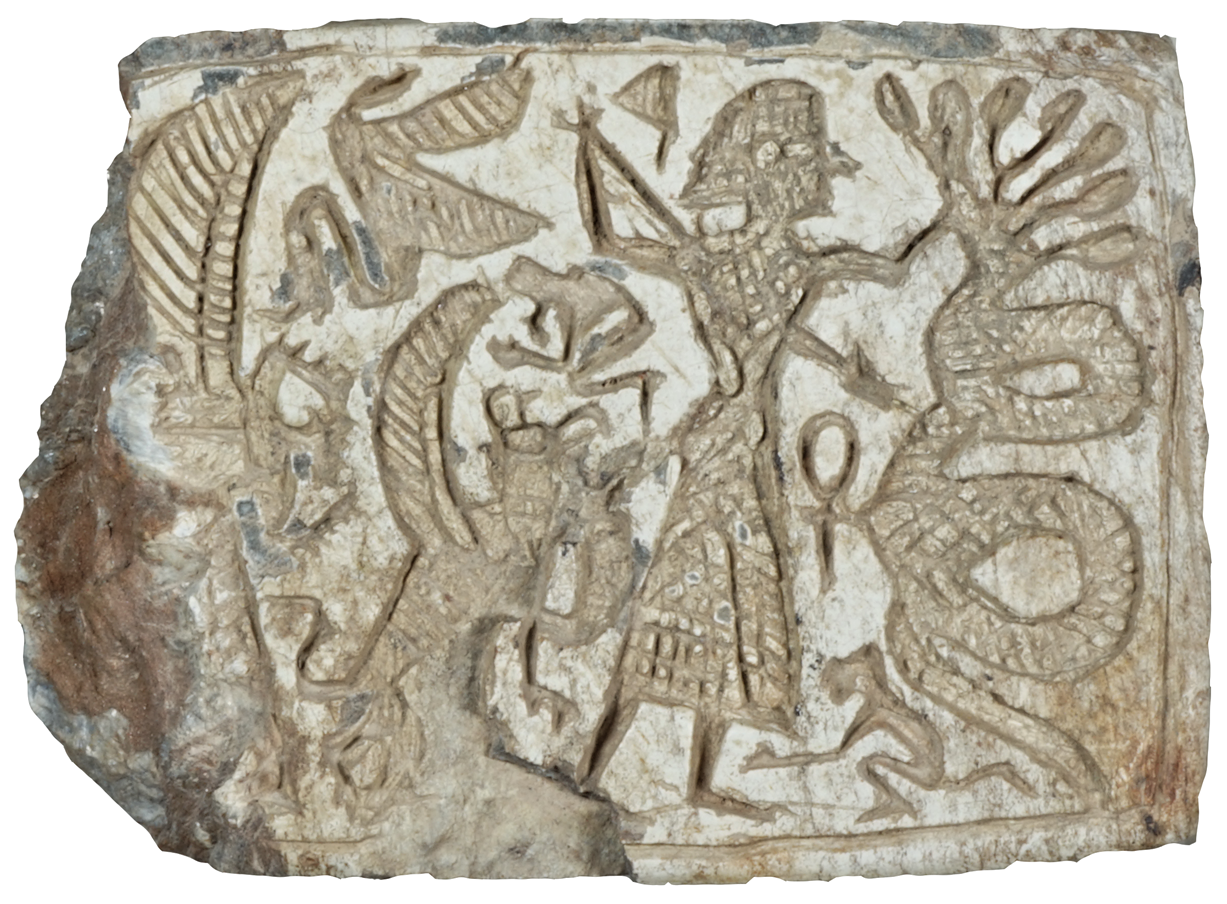
A tiny stone carving unearthed in Israel is said to hold the key to understanding a motif found across ancient cultures.
The artifact, discovered during an archaeological dig in Tel Hazor in northern Israel in 2022, is a stamp seal, a die used to impress a picture into clay or sealing wax, and it measures just 1.5 inches across.
Comparative religions professor at the University of Zurich Christoph Uehlinger calls it a “missing link” in the development of a common motif in Greek mythology as well as the Bible, in the paper “Mastering the Seven-Headed Serpent: A Stamp Seal from Hazor Provides a Missing Link between Cuneiform and Biblical Mythology,” in the March issue of the journal Near Eastern Archaeology.
In the carving, a man armed with a spear fights a seven-headed serpent that stands erect. Behind the hero are a griffin, a sacred serpent referred to as a uraeus, and a scarab beetle.
The presence of these mythical creatures emphasizes the supernatural nature of the scene, writes Uehlinger. There’s also a pair of squatting monkeys, an ankh, and one other unidentified sign. It was likely created by an Israelite or a Pheonician and dates to the Iron Age (ca. 840-732 B.C.E).
The motif of a hero fighting seven-headed snake dates back much farther, though, he writes, to the third millennium B.C.E. in Mesopotamia. It traveled to the north Syrian coast by around the mid-second millennium B.C.E, and then into the Hebrew Bible, where Yahweh fights a Leviathan. It later appears in the Christian Bible, in which a serpent beast does battle with an angel in the Book of Revelation.
Heracles and Iolaos fighting the Lernaean Hydra. Attic amphora, ca. 540-530 B.C.E. Musée du Louvre. Via Wikimedia Commons.
The motif has also been found on a Greek vase showing Herakles and Iolaos fighting the Lernaean hydra; it dates to about 540 B.C.E.
But why, scholars have long asked, does the same image appear across such long gulfs of time and region? The Hazor seal “provides a tangible link from Phoenicia to Israel,” Uehlinger told McClatchy News.
“Phoenician scribes/scholars probably preserved and transmitted the tradition they may had inherited from Ugarit (an ancient city in Syria) since the Late Bronze age,” Uehlinger added.
He calls the find “spectacular” and says that it “occupies a special place in this long and largely unknown history of myth transmission.” It’s for future scholars, he said, to determine exactly how the image traveled west and became associated with the character of Hercules.